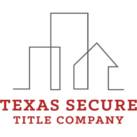Do You Have A Haunted House?
Don’t let hazards around your home kill you!

Hazards around your home can be a terrifying thing. Especially while we are in the midst of spooky season, it’s easy to get distracted by the playful Halloween decorations and forget about the real disaster lying within our actual homes. Forget the demons, what about your smoke alarm! Here are 5 ways your house can harm you and advice from professionals on how to avoid them.
- MOLD: Though mold isn’t a pathogen (a disease-causing agent), it’s still an allergen that you don’t want hanging around your house.
“When people say they have a mold allergy or they have a mold condition, it’s an allergic reaction,” says Peter Duncanson, director of business operations for disaster restoration specialists ServiceMaster Restore. “[Molds] generally considered toxic are ones like stachybotrys, which are black in color — but not all black molds cause the same reactions.”
Molds, including black molds like stachybotrys, form if moisture concentrates in an area where a food source is present, such as skin cells or paper. You know you have mold growing in your home if you smell an earthy, musty scent.
“The buildup [of mold] causes a more violent reaction, and those reactions are generally respiratory in nature and pulmonary, so you have trouble breathing,” Duncanson explains. “A very severe reaction to mold can be anaphylactic — you can’t breathe, and you go into an anaphylactic shock.”
Luckily, you can prevent mold by keeping your home dry, running the exhaust fan when taking a shower, and purchasing a dehumidifier for the basement in the summer.
If you do find black mold in your home, don’t panic. Contact a professional who can safely remove the mold and eliminate the water source feeding it.
- EXPOSED ASBESTOS: Asbestos was a commonly used building material up until the mid-20th century, when it was determined to be a very dangerous carcinogen that causes mesothelioma cancer. Builders aren’t legally allowed to use asbestos in building materials and other products anymore. However, traces of it are often found in older homes.“Asbestos is not harmful to you if you don’t disturb it,” Duncanson says. “The problem arises when you start cutting or doing demolition and asbestos becomes airborne.”
You may be tempted to DIY an open-concept living space in your vintage bungalow, but if your home was built before the 1980s, seek the advice of a professional before you knock down any walls. The latency period of mesothelioma cancer can be years, so problems may not arise until much later in your life.
Handling asbestos is a dangerous task, and professionals have the equipment to remove it safely without risking your health.
- CARBON MONOXIDE POISONING: Carbon monoxide poisoning, which kills thousands of people each year, occurs when there’s too much carbon monoxide in your blood. This can result in tissue damage or death. One of the top hazards around your home.Improperly ventilated appliances like stoves, water heaters and gas appliances can release carbon monoxide. Improperly cleaned chimneys cause smoke to circulate throughout the home. This can also give you carbon monoxide poisoning, according to Andy Kerns, a home maintenance researcher.
To protect yourself from carbon monoxide poisoning, properly ventilate appliances and clean heat sources like wood-burning stoves every year before use. Call a professional if you have any doubts about the safety and security of your appliances or ventilation within your home.
- FIRE: Seven people in the U.S. die each day from house fires, according to the National Fire Prevention Association. Most of these house fires are the result of normal, everyday use of appliances, candles and cooking equipment. The most surprising hazards around your home, however, live in the laundry room.“Dryer lint can collect in the dryer and become an electrical fire starter,” says Kerns. “Dryers are the number one cause of house fires.”
To prevent house fires, ensure that your appliances have the right rating before you plug them into outlets. Always extinguish candles after usage and carefully watch the stove when cooking.
- WET BATHROOM: The bathroom is the most dangerous room in the home. Wet, slippery surfaces often lead to falls — and result in anything from embarrassment to a fractured hip.
“Bathtubs, especially, are an area where you can fall and hit your head,” notes Kerns.
As we get older, bathroom safety gets more pertinent. It’s a great idea to install things like grab bars or a walk-in tub for ease of use as you age. Be sure to wipe down any wet surfaces, and place bath mats by the sink and tub to prevent bathroom falls.
Keep tabs on your home
Taking the time to slow down and keep your home safe is essential for any homeowner. Give your home a monthly, semiannual and annual checkup to keep it in tip-top condition. Check on hazards around your home.
“Given how busy our lives are, and all the different things we have to keep track of in our digital environments, it’s harder and harder to keep some of the physical maintenance issues top of mind. I think a lot of people tend to let things go until there’s a problem,” says Kerns. “Don’t leave it up to your memory. Have a good, reliable organizational system that keeps you up to date.”
Related:

Comments are closed.